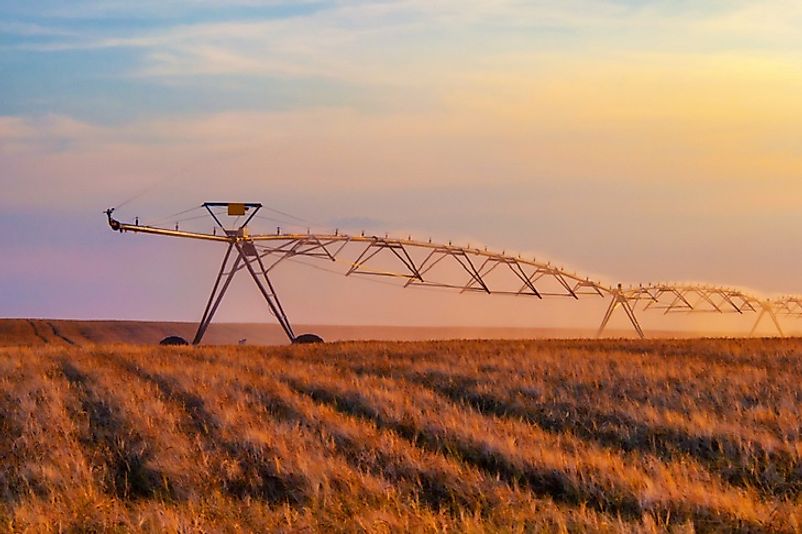Countries Growing The Most Cereal Crops Per Hectare

Modern farming methods help in producing higher yields from agricultural land. Climate also influences the adaptation of certain crops to the land. Other factors include government policy, social, economic, and political pressures. Plant domestication for agricultural cultivation has over the centuries helped these crops to adapt to drought conditions and overcome diseases. Primitive genetic engineering in the 1950s produced new varieties of commercial corn, barley, and wheat.
How Modern Farming Methods Maximizes Harvests
Good climates and modern farming methods allow farmers in certain parts of the world to get the most out of their land. According to the food and Agricultural Organization (FAO), 10% of cereal harvested are wasted yearly by its journey from farm to consumer. Rats, cereal contamination, and moisture all contribute to cereal waste. The following figures represent kilograms per hectare production for dry grain cereals harvested. The use of the word cereal includes wheat, rice, maize, barley, oats, rye, millet, sorghum, buckwheat, and mixed grains. St. Vincent and the Grenadines produces 24,486 kilograms of cereal per hectare. Among its exports, 66% is devoted to agricultural produce. Kuwait's cereal harvest amounts to 21,845 kilograms per hectare. Hydroponics and land farming are tapped for its agricultural crops. Although much of its agricultural lands were made unsuitable for farming after the Iraqi invasion. The United Arab Emirates produces about 16,461 kilograms of cereal for every hectare. Its wheat farms are located at Al'Ayn in Abu Dhabi. It also produces feed crops. Oman has attained 11,538 kilograms of cereal harvests per hectare. Cereals are planted in November and ready for harvesting in March. Belgium produces about 9,539 kilograms of cereal for every hectare. Agricultural farms in Wallonie specializes in cereals. The Netherlands produces 9,074 kilograms of cereal for every hectare of farmland. In 2004, the Netherlands was named second largest exporter of agricultural produce after the United States. A bit less is Ireland's per hectare harvest of cereal that only amounts to 8,474 kilograms. This figure amounts to just 1% of the European Union's cereal harvests. It also imports cereal grains. New Zealand has an annual harvest of 8,054 kilograms of cereal per hectare. It grows its cereal crops at Te Ara. It devotes about 150,000 hectares to cereal production. Germany produces about 8,050 kilograms of cereal per hectare. This figure is second only to France in the EU. The United Kingdom harvests about 7,707 kilograms of cereal per hectare. There are also about 56.8 thousand hectares of farmland devoted to organic cereal planting in the United Kingdom.
Higher Yields Versus Safer Crops
Modern agriculture has kept up with technological advances and refined its techniques with regards to plant breeding, fertilizers, and pesticides. As a result, higher yields and production have become the norm. However, despite these gains, experts have seen the negative effects of agro-chemicals on human health and the environment. Another concern are genetically modified organisms (GMO) that include grains and cereals. Despite the improvements of GMO crops in fighting plant diseases, the negative impact on health is a big concern. Although most research shows varied scientific results. Some countries have already allowed GMO crops for commercial cultivation. Yet other countries only allow these GMO crops as imports used for food processing.
Countries Growing The Most Cereal Crops Per Hectare
| Rank | Country | Kilograms of Cereal Crops Per Hectare |
|---|---|---|
| 1 | St. Vincent and the Grenadines | 24,486 kilograms |
| 2 | Kuwait | 21,845 kilograms |
| 3 | United Arab Emirates | 16,461 kilograms |
| 4 | Oman | 11,538 kilograms |
| 5 | Belgium | 9,539 kilograms |
| 6 | Netherlands | 9,074 kilograms |
| 7 | Ireland | 8,474 kilograms |
| 8 | New Zealand | 8,054 kilograms |
| 9 | Germany | 8,050 kilograms |
| 10 | United Kingdom | 7,707 kilograms |











